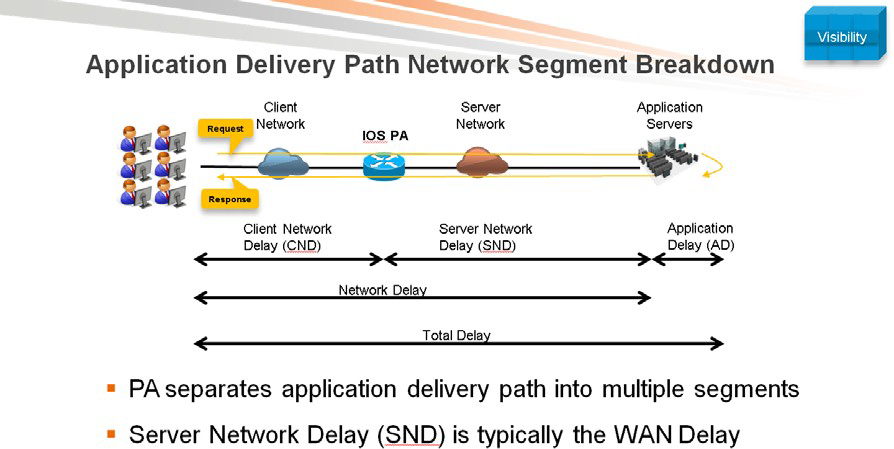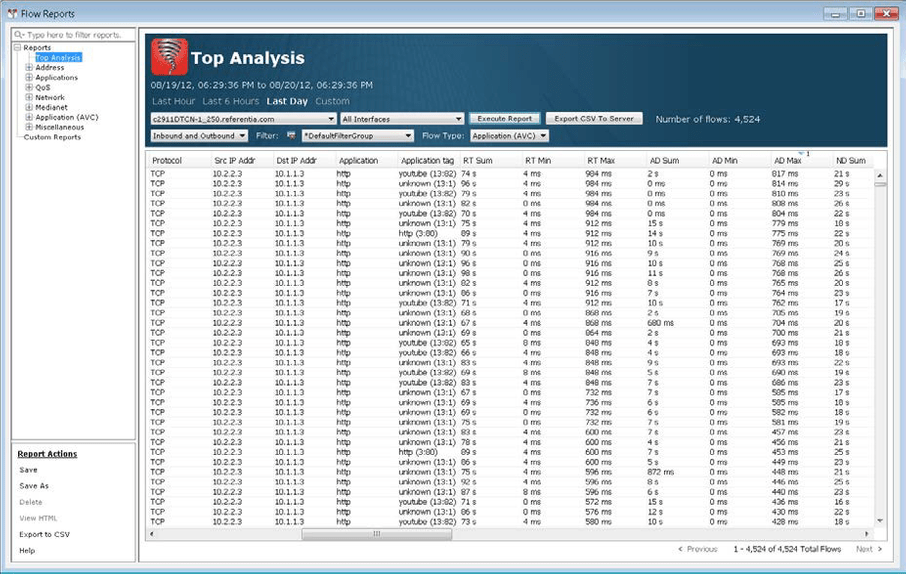Application Visibility and Control (AVC)
AVC provides intermediary network devices a look at various performance metrics from a client-server perspective. By means of AVC NetFlow, these values can easily be used to determine the performance of the client-side network, the server-side network, and the actual processing time of the application server.1

The main difference between AVC as a flow mechanism, over Traditional NetFlow and Flexible NetFlow, is the fact that it primarily utilizes 4 out of the 5-tuple information typically associated with flow data. With AVC, we are only concerned with the source IP address, destination IP address, IP protocol, and destination port. The source port was omitted in order to reduce the overall number of individual flows to process by aggregating similar sessions into one AVC flow. Data provided by AVC are typically associated with sum totals, averages, and min/max values.3

To fully understand AVC, we have to take a look at other performance metric fields and the methods for which they are calculated. Using the standard Three-Way Handshake, we can see where the Application Response Time (ART) values are derived from.
LiveNX uses the very same information to populate the AVC flow list on each supported network device in the topology. The following is only a short list of fields that can be viewed in the real-time device view and through the flow report section:
AD Sum | Application Delay Summation of all sessions in AVC flow AD |
Min/Max | Application Delay Minimum/Maximum value in AVC flow |
ND Sum | Network Delay Summation of all sessions in AVC flow |
ND Min/Max | Network Delay Minimum/Maximum value in AVC flow |
CND Sum | Client Network Delay Summation of all sessions in AVC flow |
CND Min/Max | Client Network Delay Minimum/Maximum value in AVC flow |
SND Sum | Server Network Delay Summation of all sessions in AVC flow |
SND Min/Max | Server Network Delay Minimum/Maximum value in AVC flow |

1 Kangwarn Chinthammit, BRKRST-2065 Application Visibility Control, Cisco Live US 2012, June 2012